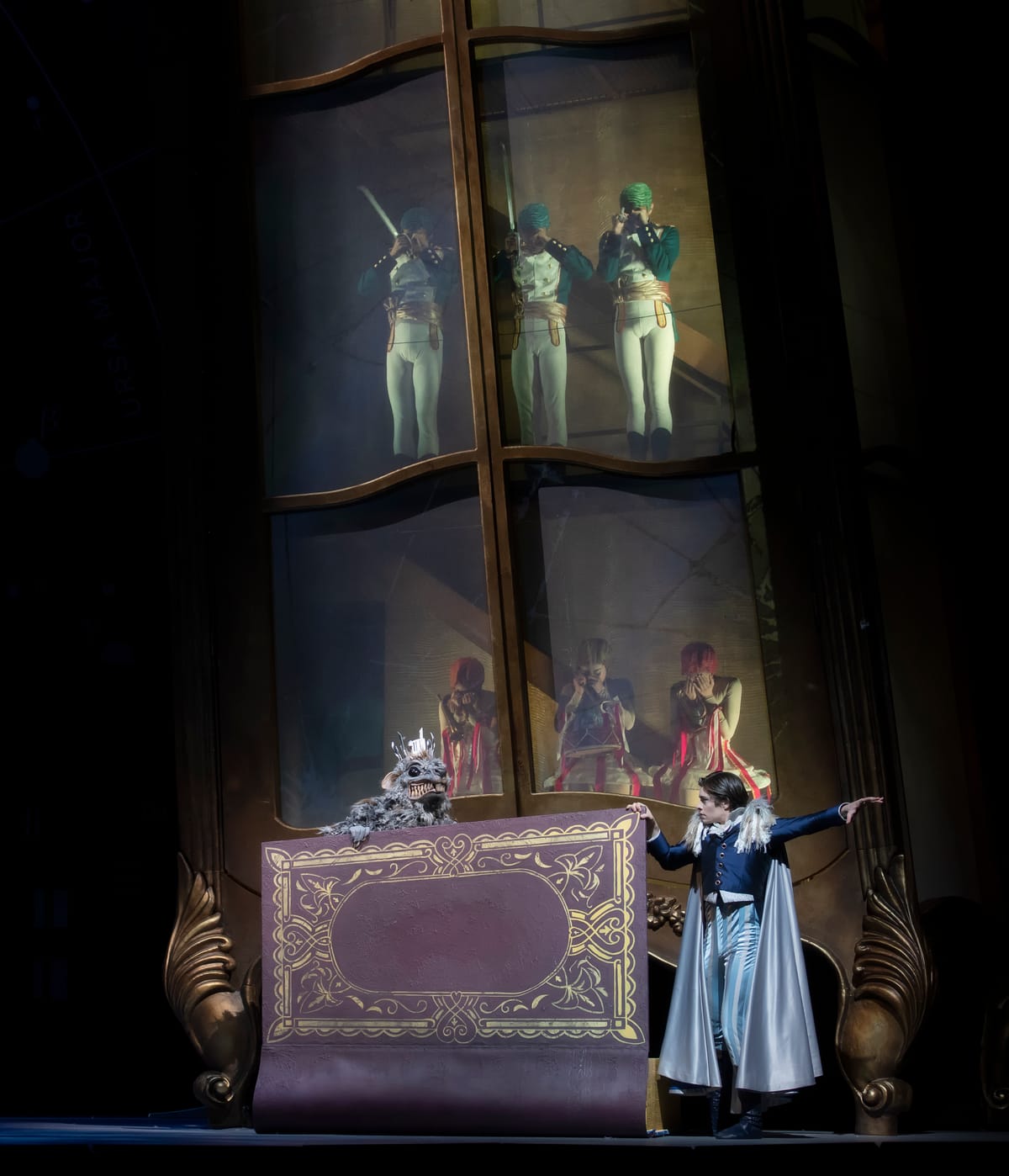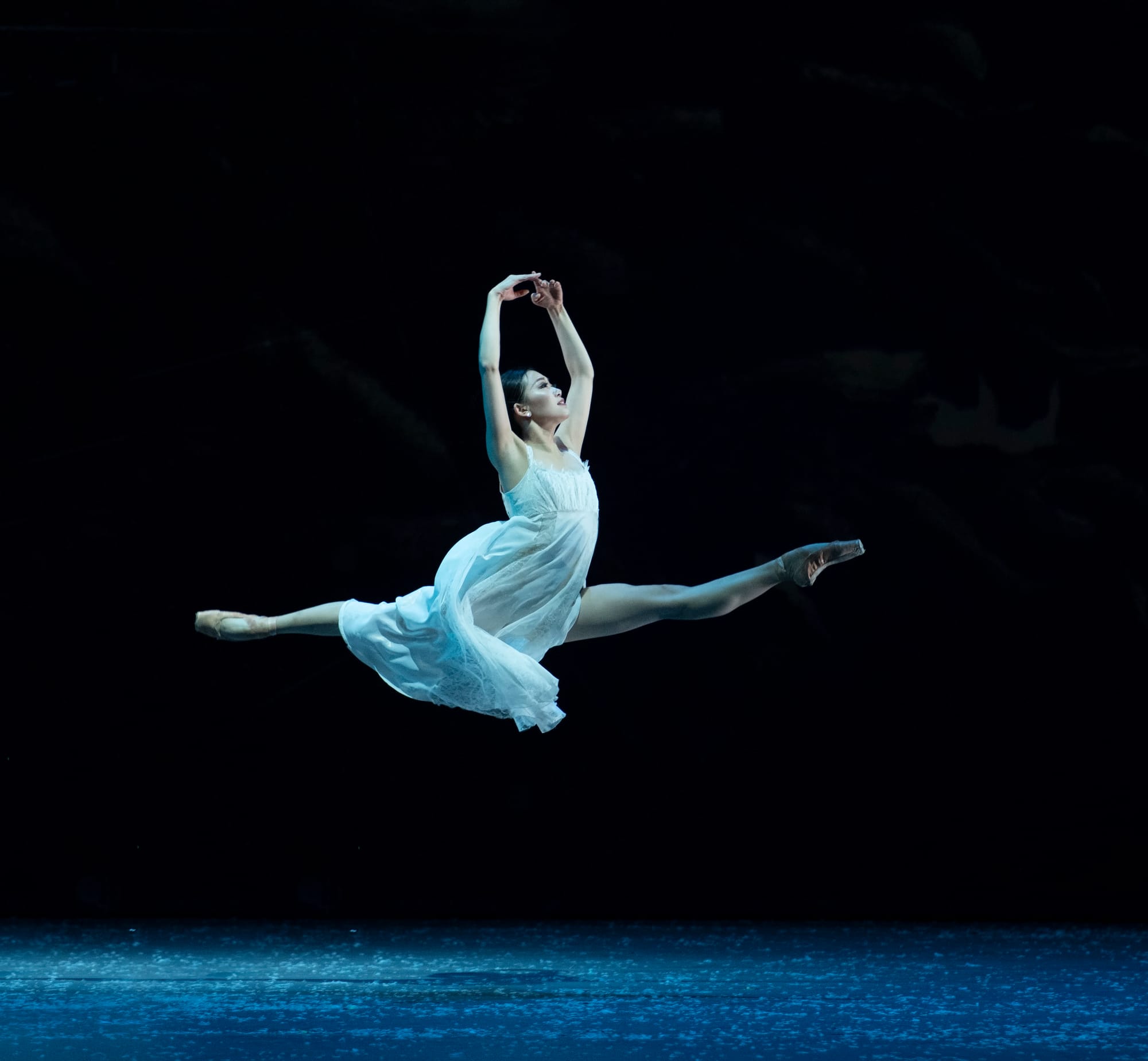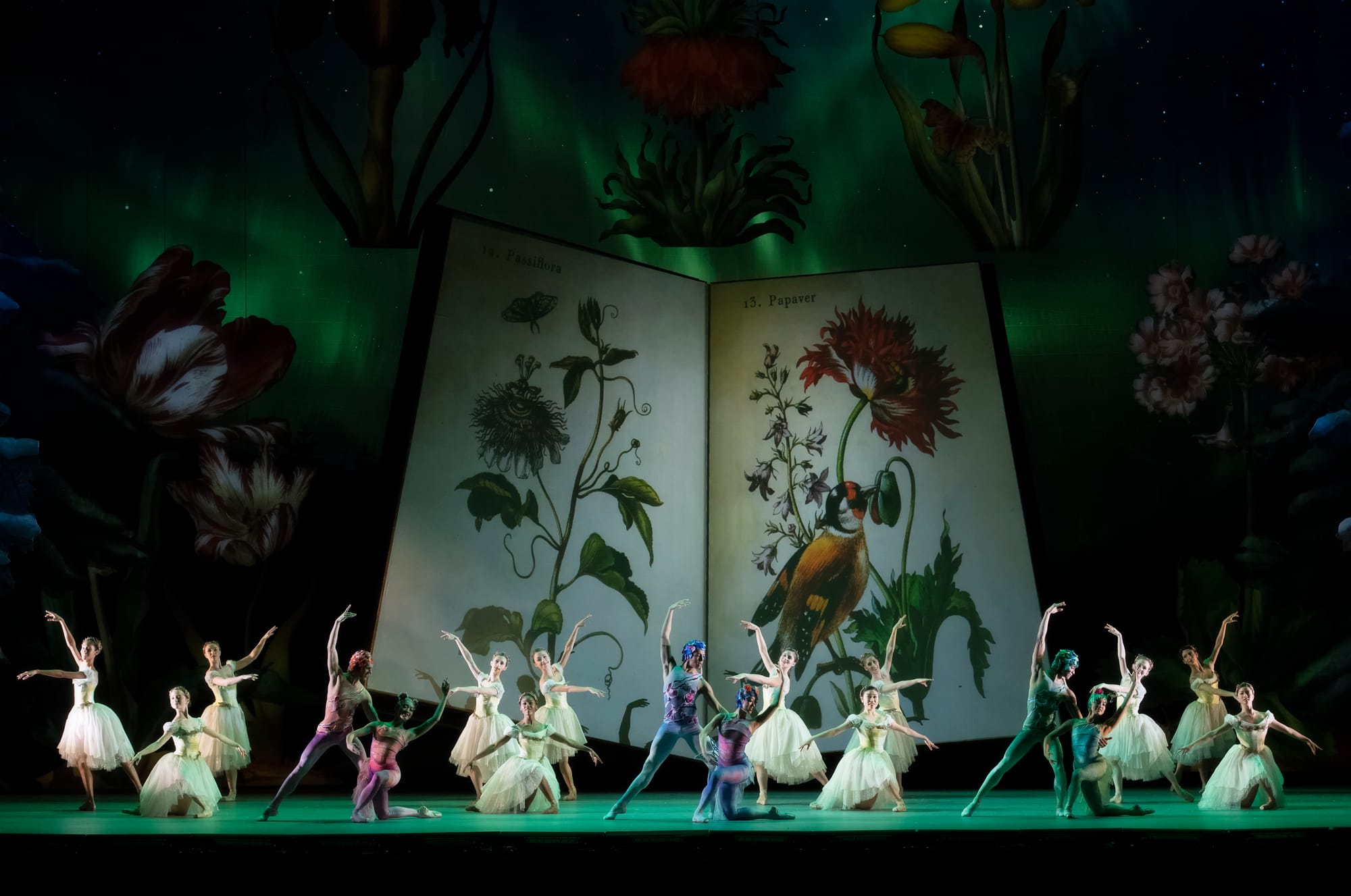Tech-Savvy “Nutcracker” Delights

“The Nutcracker”
Atlanta Ballet
Opera House
The John F. Kennedy Center for the Performing Arts
Washington, D.C.
November 27, 2019
Washington balletgoers took part in something special last week when the Atlanta Ballet — a regional troupe never before seen at the Kennedy Center — unveiled a new “Nutcracker” that made an old story glisten with intrigue and wonder. The stunning $3.7 million production, conceived by Artistic Director Gennadi Nedvigin and choreographed by Yuri Possokhov, marries timeless tradition with 21st century visual effects: multi-dimensional videography by Finn Ross, imaginative scenery by Tony-nominated designer Tom Pye, and striking lighting by David Finn. Amidst the glittering special effects, it was Airi Igarashi’s soulful dancing (as Marie) and Possokhov’s ever-clear storytelling that drew me in, bringing real-life meaning and emotion to the classic fairytale. Inspired by E.T.A. Hoffman’s original story, “The Nutcracker and the Mouse King,” Possokhov’s version of the ballet gives central importance to the relationship between Marie and the Nutcracker Prince, playing with time and space to develop a coming-of-age story full of love, hope and boundless imagination.
Time seemed of the essence in this “Nutcracker,” and Tchaikovsky’s overture (played luxuriously by the Kennedy Center Opera House Orchestra) brought no time for quiet anticipation. Sophisticated video projections launched the audience full throttle into the heart of a picturesque, old-world 19th century German village where we were whisked away for a whirling winter’s ride through spiraling rooftops and curving cobblestone streets. We paused momentarily to ponder upon Drosselmeier’s whimsical workshop where enormous clocks swirled around the human Drosselmeier (danced by Nikolas Gaifullin) who seemed almost indistinguishable from the cinematography. The video effects receded as we landed softly at the Stahlbaum’s handsome home, where guests frolicked elegantly with all sorts of winter playthings: children pulled on sleds, villagers gliding on life-size cross-country skis, and a lyrical pair (Alex Tregre and Davin Grindstaff) dancing impressively on roller blades meant to be ice skates.

Gaifullin’s dashing Drosselmeier orchestrated time, space and action with commanding presence. Soon after arriving at the Stahlbaum’s home and attempting to pass a bundle of neatly wrapped gifts through the front door (one so large it got stuck in the door frame), the scenery literally flipped on end to reveal eager guests receiving the presents in a warm, gold-adorned living room. This was the first of several attention-grabbing scenery changes, including a quick transformation of the living room into a giant puppet theater where mechanical dolls enchanted party guests with precise footwork and airy acrobatics. A curious young Marie (danced brightly by Remi Nakano) led the children’s antics while the adults partook of large amounts of champagne and bubbly merriment. Humor was not lost as they danced around a pole carousel of long ribbons, only to lose themselves in the ribbons, ending up in a happily entangled mess.
Surrealist scenery framed the transformation scene at the end of Act I, when a seemingly 50-foot-tall armchair swallowed up young Marie and a larger-than-life toy cupboard displayed the solider dolls who came to life alongside their gallant Nutcracker Prince. Giant rats entered face downward on skateboards to take on soldier dolls in a battle that was more intriguing than scary. Time travel seemed to instantly transform Marie into a grown-up (danced by Airi Igarashi) as she joined her Nutcracker Prince (Vitor Luiz) for the first of two romantic pas de deux, swirling upwards and outwards to the glorious strains of Tchaikovsky’s snow pas de deux. The pair’s pristine dancing and serene connection became the focal point among the corps of dancing snowflakes, salvaging the waltz which was otherwise too grounded.

If Act I showcased the production’s technological virtues and clear narrative, Act II provided a full palette of colorful dancing. Set in the evening amidst a starry sky of northern lights, we were transported by a colossal storybook on a journey to faraway places, the pages of the book serving to orient and set the mood. Possokhov’s appealing choreography juxtaposed classical dances with contemporary accents. The iconic Waltz of the Flowers was particularly striking, featuring a classical corps of twelve women in pastel tunics moving gracefully through various patterns of Tchaikovsky’s waltz, while three pairs of dragonflies and roses in colorful unitards danced with angular contrast, creating a thrilling visual spectacle. Other highlights included Lucas Labrador’s sensational jumps in the Spanish divertissement, Darian Kane’s mysterious and sumptuous Arabian variation, and Fuki Takahashi’s piquant Chinese dance. Jackie Nash and Jacob Bush as bobbing (but spritely) French Roosters brought ridiculous fun to the adventure.
The evening culminated with a tender pas de deux for Igarashi and Luiz that read more like a poetic conversation than a technical showcase, though technique was in no short supply. Igarashi danced with heart and amplitude that far exceeded her tiny physical frame, while Luiz was a princely partner, even if his jumps lacked polish. Fraught with emotion and longing, this pair seemed to hang onto time, savoring every moment of their imaginative journey. As the curtain closed upon them, I longed to see more of this sophisticated troupe from Atlanta.
copyright © 2019 by Ashley McKean



